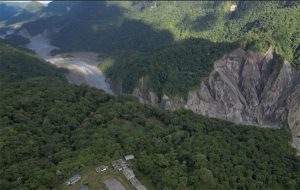
Kevin Crowley, Bloomberg News
HOUSTON
EnergiesNet.com 02 09 2023
Owners of the world’s largest carbon capture facility plan to restore operations at the $1 billion plant three years after it shut down, providing a test case for a nascent industry that experts believe is essential in achieving climate goals.
JX Nippon aims to restart the Petra Nova facility in Texas after NRG Energy Inc. finishes repairs on the coal-fired power unit to which it is connected, the company said in an emailed response to questions. NRG said it’s scheduled to complete the work in June.
The resumption would mark a significant step forward for US carbon capture, providing a new lease of life for a project that critics saw as one of the industry’s highest-profile failures. The Biden Administration’s Inflation Reduction Act provides major tax incentives to boost development of the technology that would scrub emissions from burning fossil fuels. Some environmentalists contend that even if it works, carbon capture extends the life of oil and gas extraction. Supporters say there’s no other viable option to decarbonizing high-polluting industries.
Read more: The Carbon Capture Gold Rush Is On, Thanks to New Climate Law
Petra Nova, which cost $1 billion to build including $195 million from the US government, shipped carbon it captured from burning coal to an oil field operated by Hilcorp Energy Co., where it was used to extract crude through a process called enhanced oil recovery. In that process, the carbon dioxide acts like soap to squeeze out oil and is then stored in reservoirs deep underground.
During its three years of operation it was the world’s largest post-combustion carbon capture plant by tonnes captured annually, according to NRG.
But the system faltered in 2020 after plunging oil prices and crude production “made the project economics challenging,” NRG said in a statement. NRG sold its 50% stake in Petra Nova to JX Nippon for $3.6 million at the end of last year, making the Japanese company its sole owner.
JX Nippon’s goal is to obtain further technical knowledge of the carbon capture process and help Eneos Holdings Inc., its Tokyo-based parent, become carbon neutral by 2040, spokesman Hoshina Tatsuro said by email. Petra Nova’s feasibility depends mainly on the price of oil, he said.
Carbon capture is seen by some as a vital tool to limiting global warming to 1.5 degrees Celsius above pre-industrial levels because it enables the use of fossil fuels while removing their emissions. However, compared to other low carbon technologies like wind and solar power, it’s still in its infancy due to high cost and technical difficulty.
Energy modelers forecast that US carbon capture will rise tenfold to to 200 million metric tons by 2030, as emitters are encouraged by IRA tax breaks as well as pressure from customers and regulators. But even that lofty target is far from the 6.2 billion metric tons required to be captured if the world is to meet the goals of the Paris climate accord, according to the International Energy Agency.
Advocates claim Petra Nova was a technical success. The plant, located in greater Houston, captured 92.4% of the carbon dioxide from gas processed from the coal unit and demonstrated that a commercial-scale project can be built, former owner NRG said in a report sponsored by the Department of Energy.
However, the report also revealed that the amount of carbon captured in the first two years of operation “fell well below expectations” due to extensive downtime of various system parts.
NRG’s decision to sell at a fraction of its cost suggests the plant was either difficult to run or uneconomic, said David Schlissel, a director at the Institute for Energy Economics and Financial Analysis, an environmental research group. In any case, the facility’s purported climate benefits are undermined by the fact that it was used to extend the life of an oil field.
“You’re producing more oil, and burning that oil which produces CO2,” he said. “The end result offsets some if not all of the CO2 you’re capturing.”
bloomberg.com 02 08 2023











